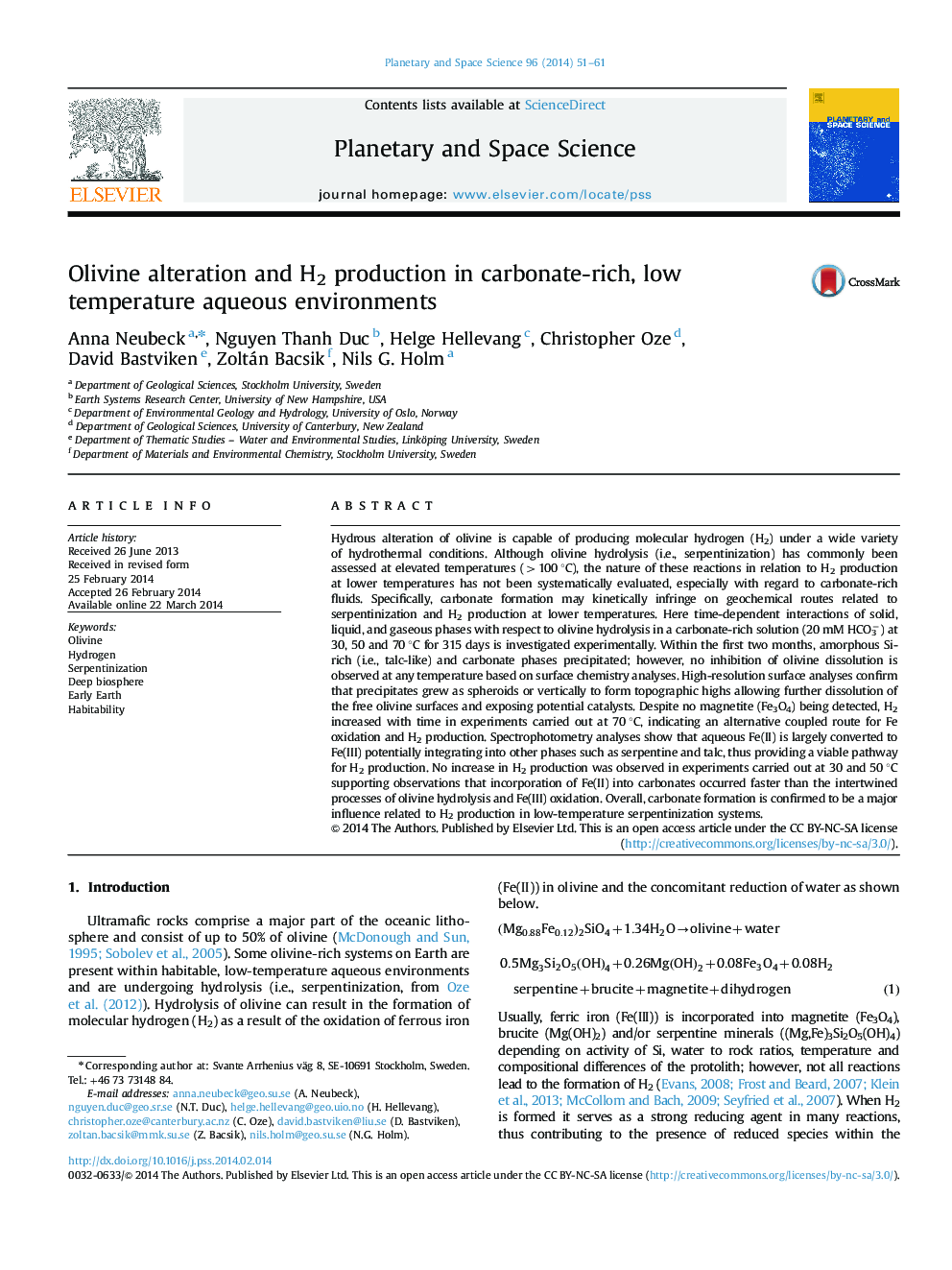| کد مقاله | کد نشریه | سال انتشار | مقاله انگلیسی | نسخه تمام متن |
|---|---|---|---|---|
| 8143776 | 1523941 | 2014 | 11 صفحه PDF | دانلود رایگان |
عنوان انگلیسی مقاله ISI
Olivine alteration and H2 production in carbonate-rich, low temperature aqueous environments
دانلود مقاله + سفارش ترجمه
دانلود مقاله ISI انگلیسی
رایگان برای ایرانیان
کلمات کلیدی
موضوعات مرتبط
مهندسی و علوم پایه
علوم زمین و سیارات
فیزیک زمین (ژئو فیزیک)
پیش نمایش صفحه اول مقاله

چکیده انگلیسی
Hydrous alteration of olivine is capable of producing molecular hydrogen (H2) under a wide variety of hydrothermal conditions. Although olivine hydrolysis (i.e., serpentinization) has commonly been assessed at elevated temperatures (>100 °C), the nature of these reactions in relation to H2 production at lower temperatures has not been systematically evaluated, especially with regard to carbonate-rich fluids. Specifically, carbonate formation may kinetically infringe on geochemical routes related to serpentinization and H2 production at lower temperatures. Here time-dependent interactions of solid, liquid, and gaseous phases with respect to olivine hydrolysis in a carbonate-rich solution (20 mM HCO3â) at 30, 50 and 70 °C for 315 days is investigated experimentally. Within the first two months, amorphous Si-rich (i.e., talc-like) and carbonate phases precipitated; however, no inhibition of olivine dissolution is observed at any temperature based on surface chemistry analyses. High-resolution surface analyses confirm that precipitates grew as spheroids or vertically to form topographic highs allowing further dissolution of the free olivine surfaces and exposing potential catalysts. Despite no magnetite (Fe3O4) being detected, H2 increased with time in experiments carried out at 70 °C, indicating an alternative coupled route for Fe oxidation and H2 production. Spectrophotometry analyses show that aqueous Fe(II) is largely converted to Fe(III) potentially integrating into other phases such as serpentine and talc, thus providing a viable pathway for H2 production. No increase in H2 production was observed in experiments carried out at 30 and 50 °C supporting observations that incorporation of Fe(II) into carbonates occurred faster than the intertwined processes of olivine hydrolysis and Fe(III) oxidation. Overall, carbonate formation is confirmed to be a major influence related to H2 production in low-temperature serpentinization systems.
ناشر
Database: Elsevier - ScienceDirect (ساینس دایرکت)
Journal: Planetary and Space Science - Volume 96, June 2014, Pages 51-61
Journal: Planetary and Space Science - Volume 96, June 2014, Pages 51-61
نویسندگان
Anna Neubeck, Nguyen Thanh Duc, Helge Hellevang, Christopher Oze, David Bastviken, Zoltán Bacsik, Nils G. Holm,